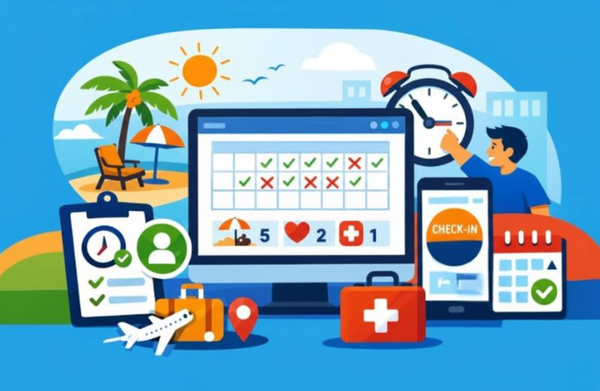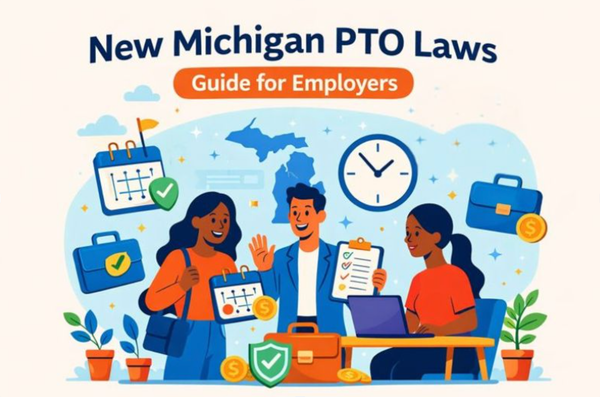Performance reviews for small companies: Best practices that work
Discover actionable performance review best practices tailored for small businesses. Learn how to use software to streamline reviews and boost team performance.

There’s never a better time to implement employee performance reviews than right now. Why? Because they give you a way to track progress and enhance employee engagement, like nothing else can.
Meeting organizational objectives requires excellence; there isn’t the capacity to carry non-performing employees. But you need to define excellence, and then measure it, before you can make decisions about who is not holding up their end.
Here, we’ll share performance review best practices that help establish a culture of excellence. Interested?

Key takeaway: Performance reviews add tremendous value when done regularly. In a small company, they can become a continuous feedback loop that provides valuable insights for business owners. Designing a performance review process for your business, based on best practices that already work, will help you get your performance management strategy off the ground within days, rather than months.
Ready to simplify performance reviews in your small business? Start with Simpleperf by BuddiesHR.
Why do small companies need performance reviews?
Performance management isn’t just for bigger companies. In every company, it is the backbone of continuous improvement and company success. By fostering open and timely communication, the review process closes gaps in your management system, giving you important information that would otherwise be lost.
When done consistently, the potential for valuable feedback increases, providing the platform for responsive business decisions.
What do you need to implement a performance management process in your small business?
Successfully managing employee performance requires a blend of digital tools, templates, and strategic planning resources. These form the foundational structures for ongoing review cycles.
1. Performance management software
Performance review software may not be the first thing you think of, but it should be - even before developing your review process.
A digital tool will help you manage employee information, track performance data, schedule review appointments, store performance information, and generate reports that guide your review conversations. These tools don’t need to be expensive or complicated. Some of the best performance review software currently available is easy to set up and customize to your unique business.
If you’re already using a platform like Slack in your business, employee engagement apps that integrate with Slack provide different avenues for collecting performance data, such as the employee's promotion of the values that drive your company culture.
The key principle: Digitize as soon as possible, regardless of your company's size. It will set everything in motion for long-term success of your review system.
2. Develop a goal-setting framework
This is a structured framework to help you link organization goals to performance evaluations. The three most common approaches are as follows:
- Key Performance Indicators (KPIs): Quantitative indicators such as revenue growth %, churn rates, and conversion rates. These indicators are specific and measurable, providing insights into the employee's contribution. Good for small businesses that focus on accountability.
- Objectives and Key Results (OKRs): A goal-setting system combining aspirational goals with measurable results. They encourage a ‘stretch goal’, with actionable steps for achieving the goal. Good for focusing on alignment, transparency, and employee development.
- SMART goals: A simple framework for goal setting. Each goal is smart, measurable, achievable, relevant, and time-bound. Good for a simplified system that's easy to use.
A hybrid performance management system combines these approaches, enabling the business to measure various aspects of its success. The monitoring of these goals should be handled by the performance management platform you choose, to avoid heaping amounts of paperwork.
The key principle: Tie your business goals to performance indicators that are easy to measure and track. Once this is established, let your performance management solution digitize the entire process for you.
3. Performance policy and communication plan
This internal document explains the entire performance review cycle, the performance management tools to be used, and how performance will be evaluated (including how often and by whom). Each team member should receive this document, so that they can review it and ask questions about elements of the policy they do not understand.
The policy should clearly outline the criteria that will be used to evaluate an employee’s job performance for monetary rewards and promotions. It should also stipulate whether peer reviews and 360 degree feedback will be part of the process.
The key principle: Streamlined performance review processes should be clearly communicated, making it easy for employees to monitor their performance and receive real-time feedback as they contribute to overall business success.
Use one system to run your performance reviews from start to finish (including automated self, peer-to-peer assessments). Simpleperf from BuddiesHR offers HR small companies the easiest way to do this. The platform drives company culture, tracks company goals, and provides actionable insights for your review.

How to integrate best practices into your employee reviews
1. Conduct regular review meetings
Regular performance reviews are the cornerstone of the review process. They can be informal (such as check-in meetings), or they can be formal, such as monthly, quarterly, and annual reviews.
Moving the company forward, and identifying growth opportunities requires you to keep your finger on the pulse of what’s going on. If you can do this consistently, you’re going to see the results you want.
2. Avoid common review mistakes made by employers
Avoid common mistakes from the outset, such as failing to prepare for review meetings, lacking sufficient evidence to support your assertions, and focusing solely on negative feedback.
Steering clear of these errors will improve the relationship with the employee, and help you run meaningful review meetings. We can’t cover this topic in depth here, but you can read our resource: 👉 8 Common mistakes employers make in performance reviews and how to avoid them
3. See the review as a conversation
Formal reviews are anxiety-provoking for most people. They feel like they’re on the spot, and that every bit of their performance is being scrutinized, with the potential for negative consequences.
Turn this idea around by creating an environment that fosters open communication and sharing. You can do this by showing genuine interest, listening closely to your employee's experiences, and providing constructive feedback that focuses on both strengths and development areas.
If you’ve never run a review meeting, you should prepare yourself adequately before you go in. This will help you avoid not only the common mistakes but also give you confidence that you can conduct great performance appraisals.
Need some tips for preparation? Try this helpful guide 👉 How to prepare for a performance review as a manager: Beginner’s Guide
4. Document the conversation
This best practice should be standard when it comes to performance reviews - and of course, the HR department would agree. Not only does it provide an opportunity to reflect on what was said, but also to accurately list the common points of understanding. Studies of retention show that only 10% - 30% of what we hear sticks. And sadly, it will also apply to your review conversation.
Of all that brilliant feedback you’ve given, only one third will remain with your employee unless it’s documented.
Research has also shown that people are 42% more likely to achieve their goals when they are documented. [1] Let’s put this into perspective. If your employee forgets up to 70% of what you said, and doesn’t have anything to refer back to, how likely are they to take action on the strategies you discussed?
5. Implement multi-rater assessments
Multi-rater reviews like peer-to-peer reviews or 360 degree assessments, broaden the evaluation lens beyond the traditional top-down approach.
When feedback is gathered from multiple sources, patterns begin to emerge which are helpful to prove consistent behavior. This empowers employees to take responsibility for their development based on actionable and corroborated feedback.
When employees know their behavior affects not just their manager’s opinion but also their peers’, they are more likely to uphold standards of professionalism, communication, and collaboration. By encouraging peer-to-peer recognition, you can reinforce values in a positive way.
6. Use performance reviews to identify skills gaps
Not only do performance reviews provide insightful data into why you are, or aren’t, achieving business objectives, but they also help you identify gaps in your employee’s skill level. Most employees are aware that they have shortages in their professional development, but performance reviews give you the data you need to make targeted decisions about training.
When should you hold performance reviews?
Performance reviews should be scheduled regularly as we’ve discussed so that they serve as a continuous feedback model for your business decisions. But when should you have these discussions? Here we make suggestions for what works well for other small businesses.
Encourage excellence by running a performance review in your small business
Implementing performance evaluations in your small business encourages everyone to focus on excellence and achieving organizational results. With so many great options available to help you digitize the entire process, all roadblocks to having a successful appraisal process have been removed.
The team at BuddiesHR has developed a suite of employee engagement apps to help you digitize every aspect of your review system. They’ve made it easy to use, and highly customizable, but haven’t spared any features. For a small business, it’s the only way to get into the same boat as bigger companies, for a fraction of the cost.
How can I get started with BuddiesHR for running performance reviews?

References:
1. Blueprint for Achievement: Mastering Goal-Setting Strategies




